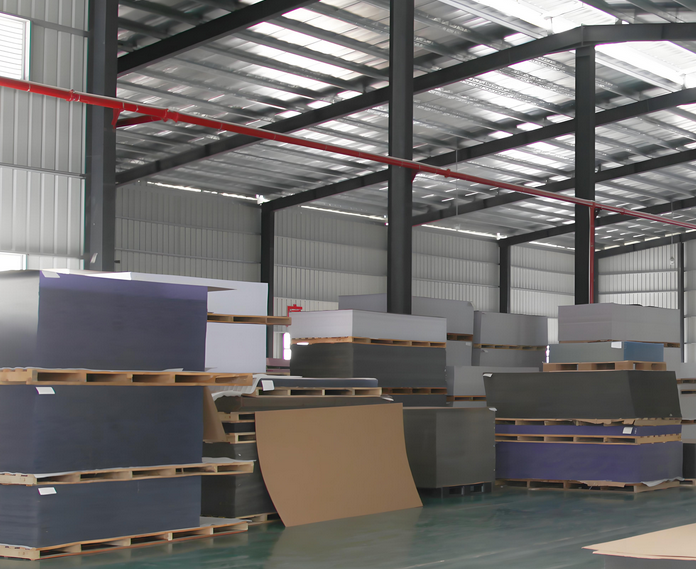בעלות על פריטים העשויים מפרספקס, המותג הנודע של יריעות אקריליות, מביאה את היתרונות של בהירות יוצאת דופן, קל משקל ועמידות בפני התנפצות, אך שמירה על המראה החדש ושלמות המבנה דורשת גישה ספציפית ומצפונית לטיפול וניקוי. למרות שהוא עמיד בהרבה מזכוכית נגד פגיעות, אקריליק הוא בעל משטח רך יותר שהוא מטבעו רגיש יותר לשריטות וניתן להעיב על ידי שימוש בכימיקלים לא מתאימים או בטכניקות שוחקות. עצם התכונות שהופכות אותו לחומר מעולה לכל דבר, החל מקירות אקווריום וחלונות גג ועד מחסומי הגנה ותצוגות קמעונאיות מחייבות גם משטר תחזוקה השונה באופן משמעותי מזה של זכוכית מסורתית. הבנת הפגיעויות של אקריליק, במיוחד ההרכב הכימי שלו וקשיות פני השטח, היא הצעד הראשון לקראת יישום שגרת ניקוי שתסיר ביעילות אבק, לכלוך וטביעות אצבעות מבלי לגרום לשפשופים מיקרוניים או לגרום לשיגעון כימי שעלול לפגוע לצמיתות בבהירותו האופטית. המטרה של תחזוקה נכונה היא לא רק ניקוי תגובתי אלא מניעת נזקים באופן יזום, מה שמבטיח שהשקעת הפרספקס שלך תישאר ברורה וחזקה מבחינה פיזית במשך כל חיי השירות שלה.

אבן היסוד של תחזוקת פרספקס בטוחה היא בחירת פתרונות ניקוי נכונים. כלל בסיסי שיש לחרוט בזיכרון הוא הימנעות קפדנית מכל חומר ניקוי המכיל אמוניה, אלכוהול או ממיסים קשים אחרים. חומרי ניקוי זכוכית ביתיים נפוצים הם אולי הגורם השכיח ביותר לנזק למשטחים אקריליים; הנוסחאות המבוססות על האמוניה שלהם אגרסיביות מדי עבור שרשראות הפולימרים של אקריליק, מה שמוביל לפירוק כימי הדרגתי שמתבטא כרשת של סדקים עדינים, הידועים כקשקושים, ואובך קבוע ומעונן שהורס את השקיפות. באופן דומה, ממיסים חזקים כמו אצטון, מדלל לכה או בנזין יתמוססו או ימיסו את פני השטח באופן מיידי, ויגרמו לנזק בלתי הפיך. חומר הניקוי היחיד הדרוש לתחזוקה שוטפת הוא סבון או חומר ניקוי עדין עם pH ניטרלי. כמה טיפות של סבון כלים נוזלי או חומר ניקוי ייעודי מפלסטיק מדולל בכמות נדיבה של מים פושרים הם הפתרון האידיאלי. יש להימנע משימוש במים חמים מכיוון שהם יכולים לרכך את משטח האקריל, ולהפוך אותו לפגיע יותר לשריטות. תהליך הניקוי צריך להתחיל תמיד בשטיפה יסודית של המשטח במים רגילים כדי לעקור ולשטוף כל חומר חלקיקי רופף, כגון אבק או חול, שמתנהגים כמו נייר זכוכית אם משפשפים אותו ישירות לתוך המשטח במהלך הניקוי.
הכלים המשמשים למריחת תמיסת הניקוי וייבוש המשטח קריטיים באותה מידה למניעת שריטות. יש לאסור בהחלט על מטליות שוחקות, מגבות נייר, מברשות עם זיפים נוקשים או כל חומר מחוספס. אפילו מגבות נייר, שנראות רכות למגע, מכילות סיבי עץ שעלולים ליצור רשת של שריטות עדינות לאורך זמן, במיוחד על משטח רך כמו אקריליק. הכלים המתאימים היחידים הם מטליות מיקרופייבר רכות נטולות מוך, ספוג נקי השמור במיוחד לטיפול פלסטי, או אבק ייעודי מצמר טלה לניקוי אבק יבש. תנועת הניקוי עצמה צריכה להיות עדינה; יש למרוח את תמיסת הסבון עם המטלית הרכה או הספוג באמצעות משיכות ארוכות וישרות או תנועות מעגליות חופפות בלחץ מינימלי. הימנע מפעולות קרצוף קטנות וקשות. לאחר הניקוי, שטפו שוב את המשטח במים נקיים כדי להסיר שאריות סבון, שאחרת עלולות להשאיר סרט מפוספס. ייבוש הוא השלב המכריע האחרון למניעת כתמי מים, במיוחד באזורים עם מים קשים. השיטה הטובה ביותר היא פשוט לאפשר לפאנל להתייבש בצורה אנכית, ולשחרר את יריעת המים. אם יש צורך בייבוש ידני, השתמשו במטלית מיקרופייבר טרייה, יבשה ונטולת מוך, ספוג בעדינות או גרור אותה על פני השטח מבלי להפעיל לחץ משמעותי.
במצבים מעבר לניקוי אבק שגרתי והסרת טביעות אצבע, כמו התמודדות עם שאריות דבק עקשניות מתוויות או סרט, יש צורך בגישה ממוקדת יותר שעדיין מקפידה על עקרון העדינות. גירוד קשה עם סכין גילוח או מגרד מתכת מובטח לנקר את פני השטח. במקום זאת, השיטה הבטוחה ביותר היא להשתמש בממס עדין שידוע כבטוח לאקריליק, כגון נפטה או אלכוהול מינרלי. אפילו עם האפשרויות הבטוחות יותר האלה, בדיקה על אזור קטן ולא בולט תחילה היא הכרחית. יש למרוח כמות קטנה על מטלית רכה ולשפשף בעדינות את נקודת הדבק עד להמסה, ולאחר מכן לשטוף מיד את האזור בתמיסת מים וסבון סטנדרטית כדי להסיר שאריות ממס. עם הזמן, גם עם טיפול קפדני, עלולות להופיע שריטות קלות. למרבה המזל, לעתים קרובות ניתן ללטש שריטות משטח רדודות באמצעות פולנית פלסטית מיוחדת או משחת שיניים עדינה מאוד, המרוחה על ידי מטלית רכה ולחה בתנועה מעגלית עקבית. לשריטות עמוקות יותר, נדרש תהליך מעורב יותר של שיוף רטוב עם גריסי נייר זכוכית עדינים יותר ויותר, ואחריו ליטוש, אם כי זה דורש תרגול וסבלנות כדי להימנע מיצירת נקודה נמוכה על פני השטח. בסופו של דבר, אסטרטגיית התחזוקה היעילה ביותר היא מניעתית. שימוש בסרטי הגנה במהלך ייצור והתקנה, התקנת לוחות במקומות שבהם יש סיכוי נמוך יותר שיברשו אותם, וקביעת לוח זמנים קבוע של ניקוי עדין הם הערובות הטובות ביותר לשמירה על הבהירות הטהורה והעמידות לטווח ארוך שהופכים את הפרספקס לחומר כה יקר ערך.
 English
English Español
Español Portugues
Portugues Pусский
Pусский Français
Français Deutsch
Deutsch 日本語
日本語 한국어
한국어 العربية
العربية Italiano
Italiano Nederlands
Nederlands Ελληνικά
Ελληνικά Svenska
Svenska Polski
Polski ไทย
ไทย Türk dili
Türk dili हिन्दी
हिन्दी Indonesia
Indonesia Melayu
Melayu Tiếng Việt
Tiếng Việt dansk
dansk Magyar
Magyar қазақ
қазақ বাংলা
বাংলা မြန်မာ
မြန်မာ українська
українська norsk
norsk Gaeilge
Gaeilge Română
Română ພາສາລາວ
ພາສາລາວ Filipino
Filipino Suomalainen
Suomalainen slovenský
slovenský o'zbek
o'zbek Igbo
Igbo Hrvatski
Hrvatski Zulu South Africa
Zulu South Africa Afrikaans isiXhosa
Afrikaans isiXhosa lëtzebuergesch
lëtzebuergesch тоҷикӣ
тоҷикӣ नेपाल
नेपाल Eesti
Eesti Yoruba
Yoruba Монгол
Монгол ខ្មែរ
ខ្មែរ 中文(繁体)
中文(繁体) Afrikaans
Afrikaans












 טֵלֵפוֹן
טֵלֵפוֹן
תגובה
(0)